Launched in the summer of 1977, the two Voyager spacecraft were tasked with making an unprecedented journey to explore the outer Solar System, sending back images and data of the planets and their moons to reveal our own cosmic neighbourhood like never before.
Linda Morabito joined the Voyager mission as an engineer in the navigation team.
More on Voyager

In the days after Voyager 1’s Jupiter encounter, Morabito made one of the mission’s most famous discoveries: a plume on Jupiter's moon Io that revealed the satellite was volcanically active.
We spoke to her to find out what it was like working on the historic Voyager mission, and how she made her famous discovery.
View our online gallery of Voyager's best images of the Solar System.

How did you become involved with the Voyager mission?
I was working in the Satellite Ephemeris Development Group at NASA’s Jet Propulsion Laboratory when I was a very young student.
I didn’t even have my undergraduate degree at the time, although I was working towards it at the University of Southern California’s Department of Astronomy.
I was extremely excited because I had been taken onboard as a temporary summer employee.
Once I achieved my degree I was taken onto the Voyager team, initially as a full-time engineer. Our job was to improve our knowledge of the orbits of the moons of Jupiter, so we could use them in the process of optical navigation for the spacecraft.
During mission operations, I then became a member of the Voyager navigation team and worked with some of the finest people one could ever hope to work with.
Interestingly, the position had been filled long before I came to work on Voyager, but one of the engineers made the decision to take the summer off to do something different for a change.
This opened up the cognisant engineer position for something called the Optical Navigation Image Processing System, which we called ONIPS.

This system was an entire mini-computer that took up the space of pretty good-sized room, and it was dedicated to finding the highly accurate centres of not only stars, but also of the moons of Jupiter.
We needed to know the locations of the centres of those bodies in the images we had taken to sub-pixel accuracy. This was asking quite a bit at that time, but it was certainly doable!
Back then the camera was a vidicon, which is really hearkening back to technology long ago.
We had to take into account high amounts of image distortion that would change the shape of the satellites due to overexposure.
It was an electron readout beam, and it would get deflected towards higher charges as it digitised the data.
So we were fundamentally tasked with completing the work to make sure that we accounted for all the geometric distortions in those images, so that the navigation team could do our job.

Why did you have to know the positions of the stars?
It’s a form of triangulation in order to find the spacecraft’s position relative to the moons, to the highest accuracy possible.
You need to get a star catalogue dated to a particular epic, then you apply proper motions, because we move relative to the stars and they move relative to us.
There wasn’t a single star catalogue in existence that could give us the accuracy that we needed in order to accomplish our task.
One of the most interesting things I was able to do during the mission, in addition to the technical considerations, was when a colleague and I went up to Lick Observatory in northern California and we were able to assist in the process of the creation of a star catalogue so that we knew the true positions to the highest accuracy possible.
It's incredible that did all that from the ground
Exactly! This was of course pre-Hubble. I know for example that when the New Horizons team were preparing for Pluto, they needed to know how many moons they might need to be aware of so they could dodge them.
And they did employ dedicated time with Hubble, and had the privilege of working with Dr Mark Showalter of SETI (the organisation looking to answer the question 'will we ever find life beyond Earth?'), who discovered two of Pluto’s moons.
He employed dedicated time on one of the world’s greatest observatories to accomplish his work, but of course Voyager pre-dated those times.
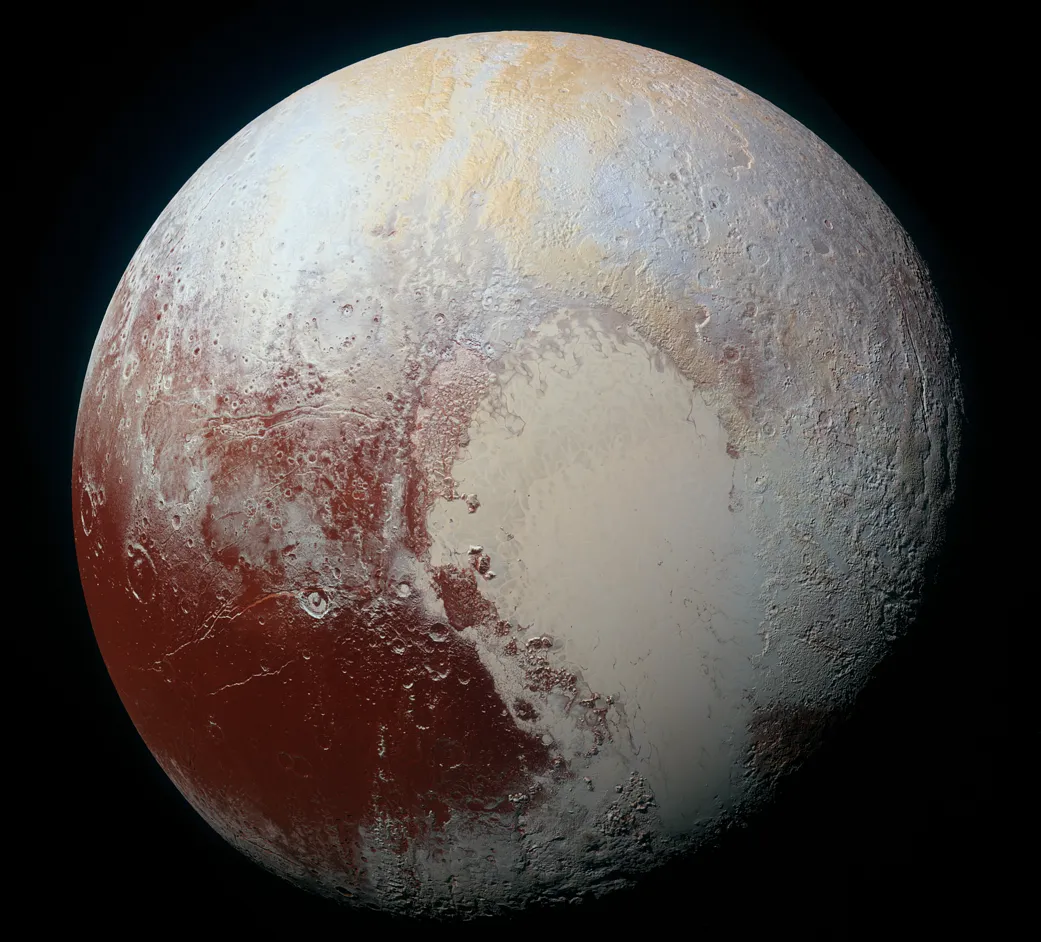
What was a typical day like on the Voyager team?
The use of the term ‘day’ really does employ all 24 hours in the case of the development period.
But then of course all the software had to be locked in at some point ahead of the encounter and no more changes could be made.
Once the development period is over, it then progresses to mission operations, and that is truly a once in a lifetime experience.
Particular days stand out, when in order to do my work I really needed to be there in the very early hours. I don’t think I will ever forget crossing the laboratory in near darkness before the Sun rose.
I really felt as I walked along that my life’s goals and dreams had intersected with reality, and I felt very privileged to be doing that work.
There really wasn’t much sleep in those times during the development, particularly in February prior to the Jupiter encounter.
Our job, to be honest, was to make sure that no-one ever heard of us or knew the work we were doing; we just wanted to navigate that spacecraft flawlessly, and that is exactly what I was privileged to do.

Is there much difference between Voyager and modern missions?
I have had the privilege of spending a day with the people who operate rovers on the surface of Mars and it was an amazing experience.
I suspect that any laptop of reasonable quality has far more computing power than my mini computer.
It took up an entire room and had to be cooled, so there was an enormous amount of noise coming from its fans at all times.
Every time I had to step inside the little bull pen area of the navigation team I had to put on layers of clothing!
Things are different now: there’s more computing power.
There was actually a mission test and imaging system across the street from us during Voyager, in the Spaceflight Operations Facility.
This was the location at which we would receive the data coming from Goldstone Deep Space Communications Complex.
We had a runner who would run the data across the street, and it was most exciting at times.
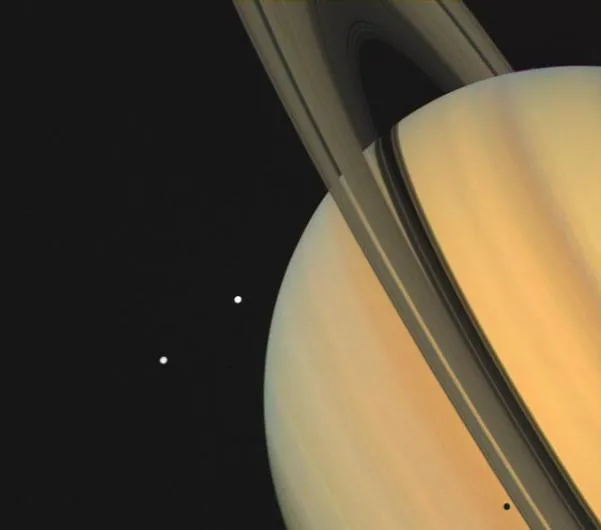
There were actually a few final manoeuvres that needed to be made just prior the encounter to ensure that we were in exactly the right place to view the satellites and capture them in our images.
I recall waiting for the runner with the rest of my entire navigation team.
The data was somewhat late in coming; not because of any errors, but just because when you’re counting every second and you need that data to be combined with Earth-based data, the seconds going by made everybody extremely nervous.
I had to put the data on a very large tape reader on my mini computer system in order to be able to access it, and it was a very nervous time.
I’m sure they’ve improved upon how that is done nowadays, but it made the moments quite unforgettable.
All these years later, I still haven’t forgotten looking at my manager and my manager looking at me, and everyone waiting for the data so that the trajectory direction could happen when it was supposed to.
No matter what scientific effort you are involved in, including the exploration of space, you can only work with the systems that exist at that time.
We accomplished all our goals, but it made it a very memorable and exciting time.
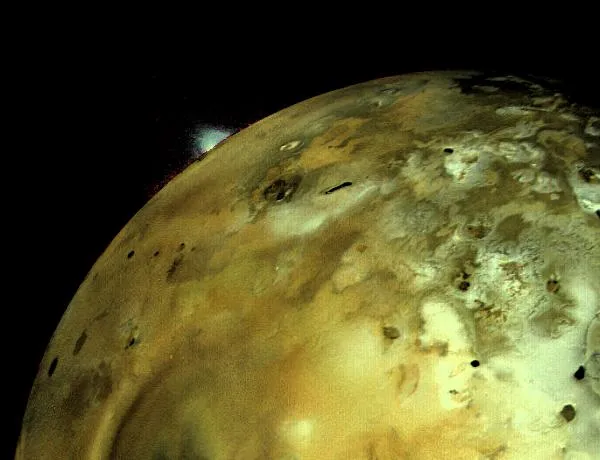
When the data came in from Jupiter, did it live up to the hype?
During the development phase of the mission, those of us who were privileged to be working in the lab at the time doing our jobs would look at the monitors and every day Jupiter would move closer and closer to us as the spacecraft approached it.
There are some amazing science fiction writers out there who can describe things to us we have not yet seen.
But the appearance of Jupiter at the level of detail that we were seeing, was certainly beyond human imagination, in my opinion.
As navigators, our images were not colour images, they were for the purposes of navigation.
But I remember during the very brief periods of time that I did go home and sleep, I had the opportunity to see the fruits of our labour.
It was an amazing feeling knowing that the mission scientists, who were a floor above us in building 180, were receiving the remarkable pictures.
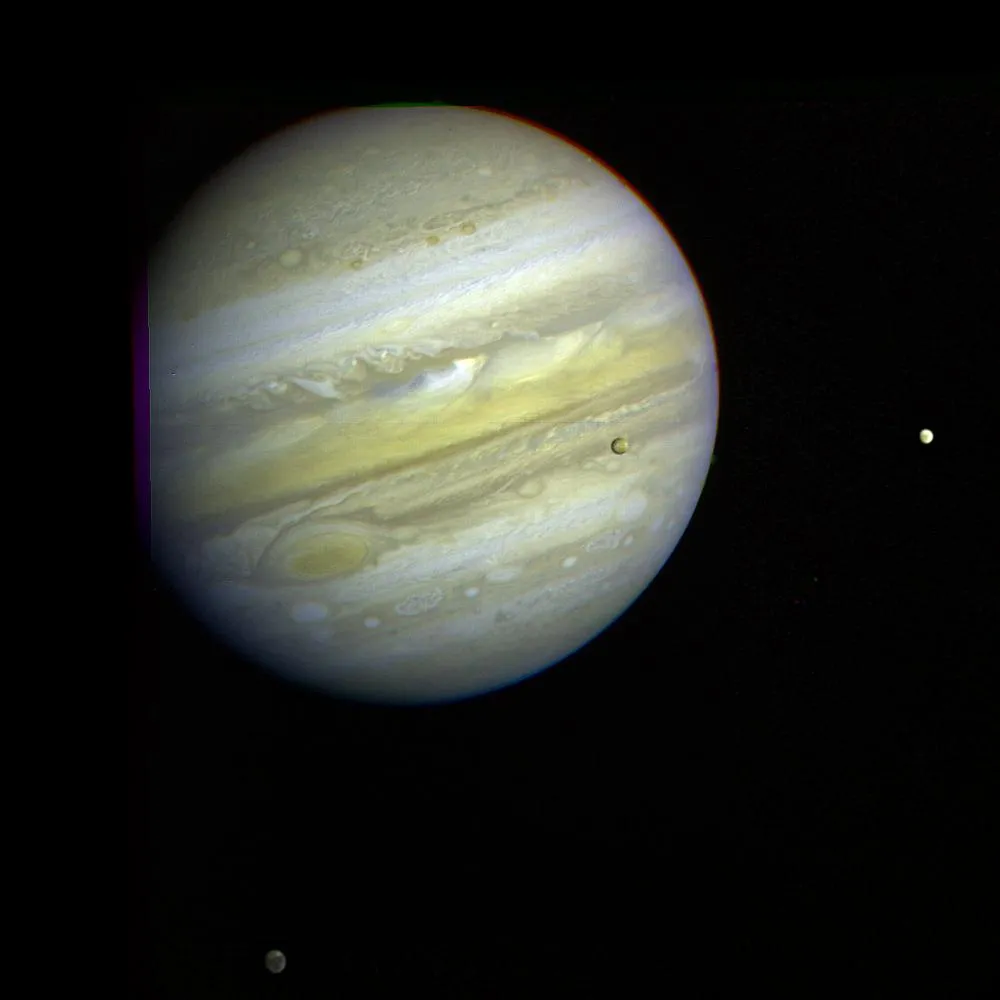
I had been working so hard that I hadn’t had a chance to view the images of Io up close, but then once I saw it during a press conference somewhere in the laboratory, the moon took my breath away.
I almost couldn’t believe what I was seeing; what appeared to be one of the strangest objects humanity has ever seen in the Solar System.
I will never forget it. The colours of Io, caused by sulphur dioxide at various temperatures, range from black to orange to yellow to blue.
The way scientists described it and the way we described it caught on very quickly: it looks like a mouldy pizza!
I’ve often felt that the exploration of space will do a lot more more than open our eyes to the Universe. It will change us.
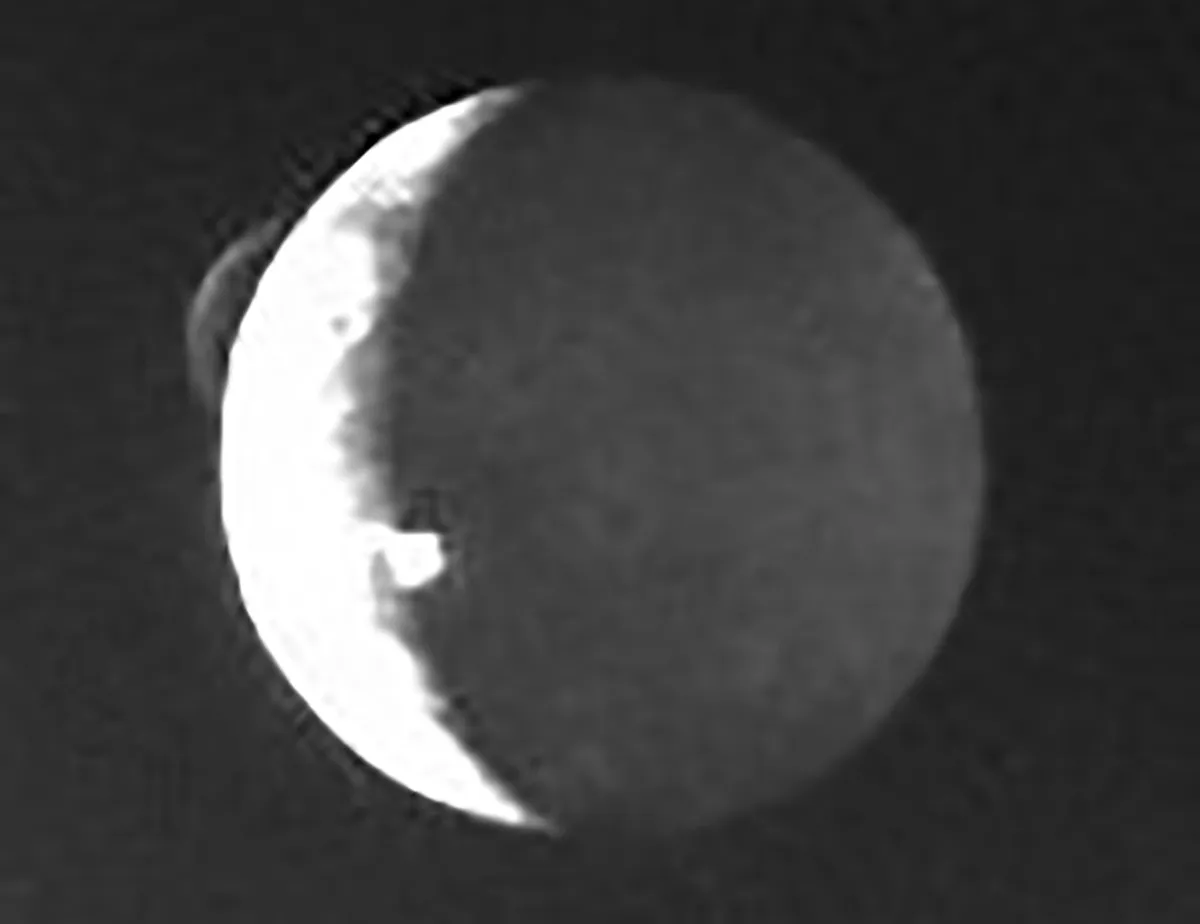
How did you discover volcanoes on Io?
It was incredible to see Io: something that people had never seen before, or could even imagine would have that appearance.
This is an object that’s a moon, is not too far from the size of our own Moon, and is about the same distance from Jupiter as the Moon is from Earth.
From what I had read, scientists were pretty confident that we would see an object with craters that was potentially geologically somewhat dead like our Moon, but that’s not what happened!

Stanton Peale from UC Santa Barbera had published his prediction before the encounter, which was the heating of Io through tidal dissipation.
He did not anticipate a cratered world, he anticipated a world whose internal heat was coming from an external source: gravitational tugs between Jupiter and its sister moons.
He anticipated what we were seeing at Io, so my discovery fortunately happened in time for us to make the most of our presence there with Voyager.
Once we received the images, I would get the opportunity to look at the digital data, but also to see the actual picture on my monitors.
Post encounter, I had an interactive system that was designed to show me what I needed to see in order to do the high-accuracy centre-finding.
I had done this many times before, but the Io pictures were very different from anything I had ever seen pre-encounter.
To be honest, they had a very low priority.
I think nearly every member of the imaging team had left to return to their home institutions at that point, and really everybody thought that the wonders that Voyager had revealed were pretty much behind us.
Since it was such low priority and I hadn’t had very much sleep at all, I had actually considered "am I really going to be able to do this?" but of course you are on automatic pilot and you just do your job.
I came in and displayed the pictures, and I was astonished because the phase angle did not result in fully lit satellites, so Io was a crescent and you could see its dark portion for the same reason that you can see the dark portion of our Moon when it is a crescent.
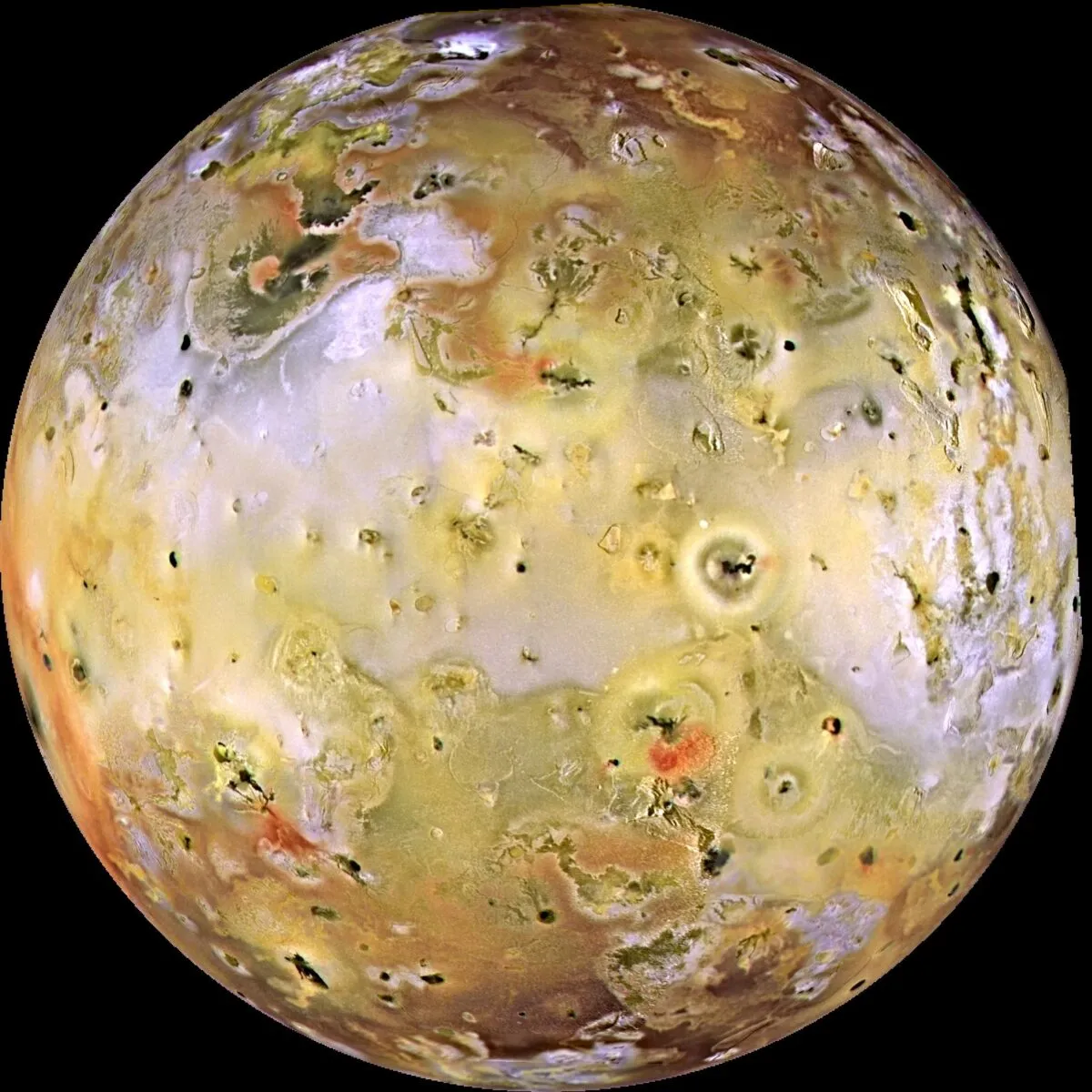
When our Moon is in a crescent phase, someone on the Moon would look at Earth and our planet would be in a gibbous phase, and the light reflecting directly off Earth would illuminate the dark portion of the Moon. Jupiter was doing the same thing to Io.
There was a bright crescent of Io, captured as the spacecraft was looking back over its shoulder for one last look, and we were going to use that data in order to improve our knowledge of the orbits of the moons themselves, from a perspective that humanity had never before achieved.
That’s what I was doing that morning.
The software I was using was based on having a fully-lit satellite, so I knew that the high accuracy centre-finding was not going to happen.
I made the decision that the images were useless in terms of the purpose for which they were taken, but I began processing them anyway.
It is now standard to have ‘plume finders’ in any software for this purpose, but there was no such thing back then.
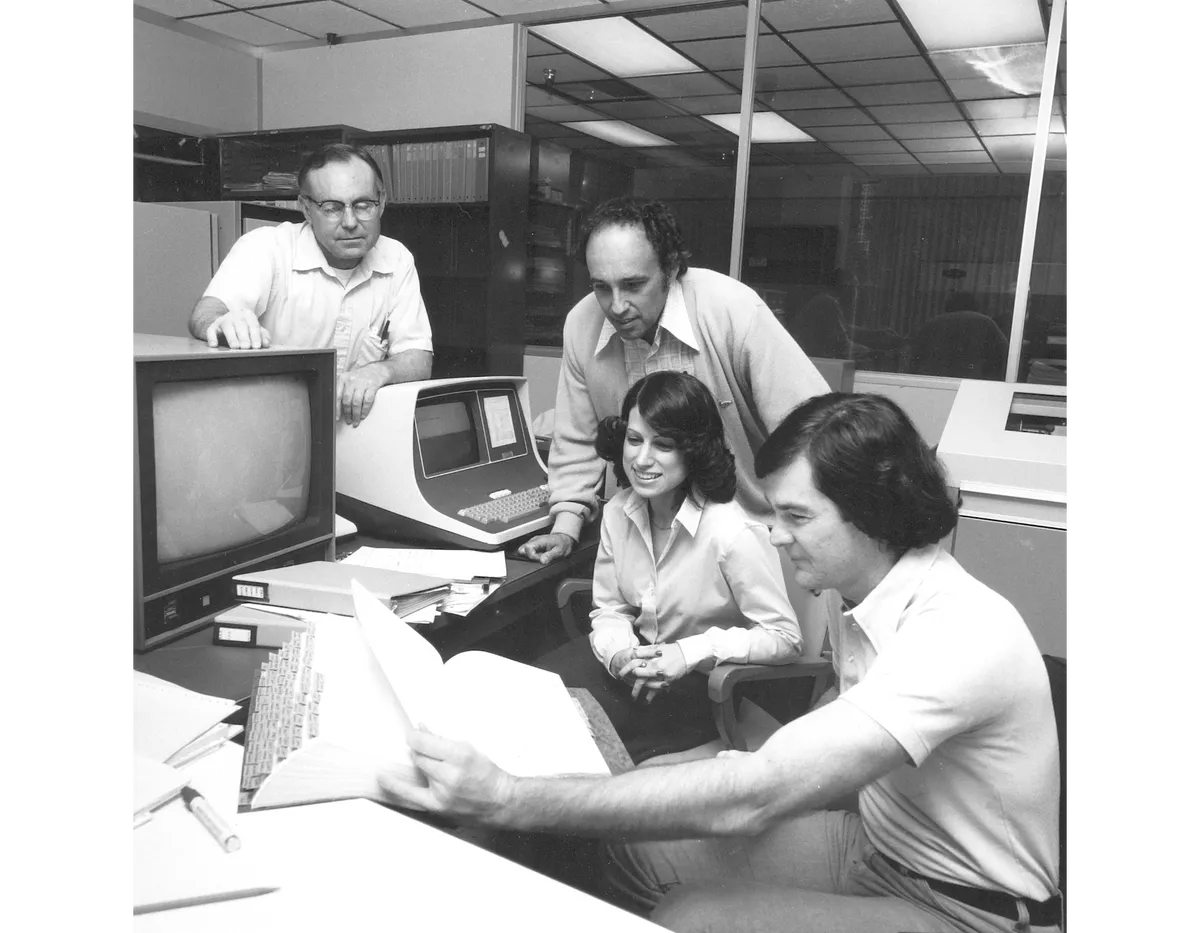
I performed what is known as a ‘linear stretch’ on the image to bring out the contrast and pick out small variations in brightness. At that moment, a gigantic object appeared off the limb of the moon.
I believed what I was seeing was real, in the sense that it belonged to my data, so I just kept asking myself "what is that?" over and over again.
I think I thought if I asked myself that question enough, the answer would finally occur to me!
But of course I had no idea what it was and I was very short on sleep.
The object had a phase angle associated with it: it actually had its own crescent and its own illuminated dark portion.
There was an offset in the orientation of this crescent to Io’s crescent.
I had performed the linear stretch in order to bring out the dim signal of a star, but I honestly don’t remember anything about that star now.
This object was huge; it was about a quarter the size of the crescent in the image. It was umbrella-shaped and raining back down.
Of course now we know that it was a plume rising about 270km above the surface of Io.
I began making educated guesses, one after the other, and started contacting people who were familiar with the camera systems and artefacts.
There were blemishes in most images, things that weren’t real, and so I had to eliminate this possibility.
I also had to eliminate the possibility that it was a newly-discovered satellite because that’s what it looked like.

One after another, I contacted the people who could give me the answers on the spot, because I felt I didn’t have a lot of time and I wanted the answer.
By the time the day was over, we had the answer to the extent that Dr Edward Stone sent commands to one of the instruments to detect further possible evidence that this was a volcanic plume.
I had to find out the latitude and longitude on Io directly beneath the spacecraft and then had to extrapolate based upon the appearance of the cloud, because I didn’t know whether it was behind the limb or not.
But once you have the spacecraft latitude and longitude, it’s just a simple addition and subtraction, and we could then position the object.
It landed just about on top of the large heart-shaped volcanic feature on Io. I don’t think I will ever forget the moment the latitude and longitude of what I was seeing lined up with that surface feature.
The most memorable part was when I began making those initial enquiries and I had a few moments alone with the image.
Those moments very early in the morning were the only ones that belonged to me in terms of this discovery, because the science is more important than any one individual.
It was the stuff of dreams, because I knew I was seeing something that most likely no human being had ever seen before.
Dr Stone was called in and you could see it in his eyes: he knew in a heartbeat what he was seeing.
I was unaware of Stan Peale’s paper, because it was published just before the encounter, but there were a lot of people, including Ed Stone, who were looking for any possible evidence to back up the prediction.
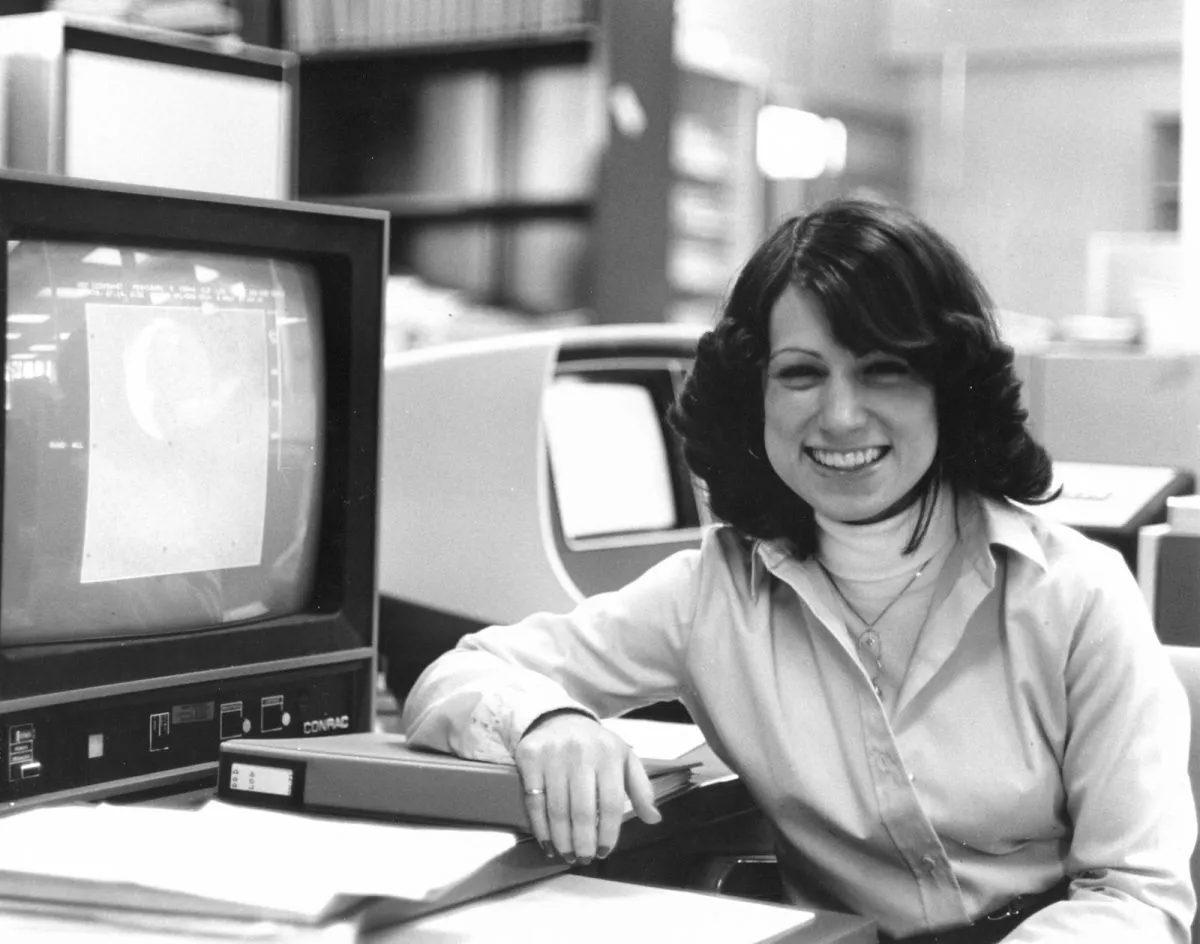
Were you were lucky to have worked with a planet like Jupiter?
Yes! We were explorers. We may not have left this Earth, but humanity sent an explorer to represent us.
These were moments of incredible opportunity, and they often say we rewrote the textbooks. Yes we did.
I talk to my students and I good portion of my course is on tidal forces: that amazing way to make worlds generate internal heat and come alive. This was the first time we saw this happen.
Voyager had so many firsts, and how could I ever be so privileged to participate? Those were my dreams; to somehow move humanity forward.
Does the public takes current missions for granted?
The wonderful thing is that now we’re a little more aware now of what goes on inside a space mission.
I’ve often thought that the public did not get enough exposure of the mission during that time, because things were a bit more formal back then, and you’re so busy with the science that it’s difficult to also address the public.
But what we need is the ability to inspire young people into these fields.
While the discoveries Voyager made were exciting, going inside the missions and taking a camera is important.
I don’t know if you are aware of the movie The Farthest, but it is the definitive documentary of Voyager and contains footage of the mission at that time.
These are the messages we need in order to find the explorers of future generations. Education is key and we need it for young people so that their potentials can be maximised and they can move us forward.
Things have changed a bit in that scientists are more able to interface with the public, but I would say now is the time to continue the momentum.
It’s a huge Universe, an amazing Solar System, but it’s a dangerous Universe and we need to understand what happens to other worlds, other planetary systems, other galaxies, because what we learn about what’s out there, we learn about ourselves.

